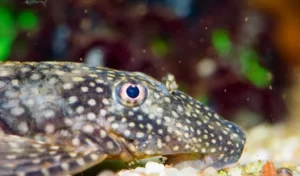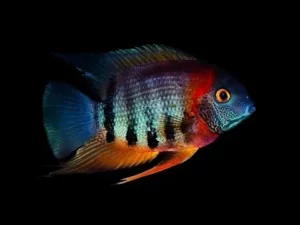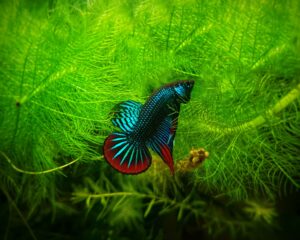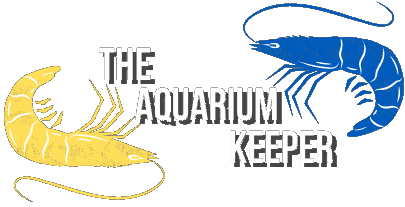
How to Plant Bucephalandra in Aquarium? Planting Guide

Writer at The Aquarium Keeper
Bucephalandra is one of the most versatile and good-looking plants in the aquarium hobby. There are a lot of different buce variants to choose from, that range from brown to red color. This particular plant is very easy to take care of, but a lot of the times beginner don’t know how to properly plant it. Continue reading this article, to find out the proper planting methods for bucephalandra!
Bucephalandra Species Overview
To begin, bucephalandra is a slow-growing plant, that does not require a lot in terms of nutrients and CO2. It is mainly used in the foreground and midgrounds section of the aquarium, attached to decorations, and planted into the substrate.

Bucephalandra is a beginner plant, simply because it does not need too much extra care, compared to harder plants in the hobby. Here is more information about bucephalandra plant:
- Number of species: More than 30
- Origin: Island of Borneo, Asia
- Scientific name: Bucephalandra
- Water temperature: 22 – 29 C (72 – 84 F)
- pH: 5 – 8
- Need for CO2: Low
- Maximum height: 7 in / 18 cm
- Minimum tank size: 2 gallons
- Lightning: Low to medium
- Fertilizer: liquid fertilizer and root tabs can be used to supplement nutrients for this plant
- Growth rate: Slow
- Propagation: Through rhizome
- Care Level: Very easy
The most interesting aspect of this plant is the way it is propagated. Bucephalandra does not let out “runner” plants, which eventually become their own individual plant. This particular plant has a “rhizome” part, which is the part of the plant where the roots and the leaves grow. To propagate this plant, simply split the rhizome part into two pieces, and they will eventually be different plants.
Biggest Mistake While Planting Bucephalandra
Planting bucephalandra is very easy, but there is one crucial mistake, that a lot of the time beginners make. As I mentioned before, the rhizome part of the plant is where all the roots and the growth come out. Sometimes beginner fishkeepers mistake that part for a stem and directly plant it in the substrate with the roots. This is a serious mistake because the rhizome part will eventually start to decay and rot, causing your bucephalandra to die.
Ways of Planting Bucephalandra in Your Aquarium
Moving on, there are mainly 3 ways to plant your bucephalandra plant in your tank. All methods are not that hard, but some require more effort to successfully plant bucephalandra. Planting an aquarium plant in an incorrect way can be one of the reasons why aquarium plants die. You can choose the planting method that personally works best with your aquarium setup.
Plant it in The Substrate
The most easiest way to plant bucephalandra is to stick the roots into the substrate. This method works with all kinds of substrates: sand, gravel, and nutrient-rich soil. If you want to choose this method of planting, be very careful not to bury the rhizome part of the plant.
Although this method is the easiest one, it does not always have the best results. Some smaller bucephalandra species simply don’t have big enough roots to hold themselves in the substrate. This will eventually lead to uprooting problems. Another factor you need to consider is your fish. If you have a lot of bottom-dweller species living in the same tank, they also might uproot your bucephalandra. If this is the case, you might want to consider other planting methods.
Attach it to Decorations
Probably the most popular and versatile planting method is simply attaching your bucephalandra to decorations. A lot of aquascapers use this technique, and glue their bucephalandra species to driftwood, rocks, and other types of decor. If you want to use this method, be sure to be using aquarium super glue, because it is designed for these types of purposes, and will not harm your tank.
Another way of attaching bucephalandra to decorations is using some sort of string or rubber band. This is also a good way of securing bucephalandra in one place, but it might not be the most visually appealing way. If you are doing this method, be sure not to damage the rhizome part of the plant with your rubber band or string, as that can cause your plant to struggle.
You might also like to read: 20 Aquarium Carpet Plants You Should Try
Fit it Somewhere in Your Tank
The most time-saving method of securing your bucephalandra plant in one place is to just fit it somewhere in your tank. If there are any gaps between rocks, or driftwood, try to squeeze your bucephalandra into those gaps, and double-check if it stays in one place.
This method is the quickest, but sometimes bucephalandra somehow escapes those little gaps, and starts floating, but this is very rare. In most cases, your bucephalandra will stay in one place, and eventually root to the rocks or driftwood.
Can Bucephalandra be Left Floating?
Bucephalandra is not a good floating plant, because it is a root-feeder plant, which means bucephalandra needs to stay in one place to thrive. Bucephalandra also absorbs nutrients from its leaves, and this might sustain the plant if it was left floating at the top of the tank, but certainly, your bucephalandra would not thrive. It is best to plant bucephalandra in one of the ways mentioned above.
Frequently Asked Questions
Can Bucephalandra Grow Emersed?
Yes, bucephalandra has the capability to grow emersed. This plant originates from the lakes and rivers of the island of Borneo, in which the climate is constantly changing. Bucephalandra has the capability to adapt, and can grow fully submerged, or only partially in the water.
How do You Make Bucephalandra Grow Faster?
The easiest way to grow bucephalandra faster is to have a nutrient-rich substrate and CO2 injections. Another important factor is the water flow. Bucephalandra likes moderate water flow, so be sure to provide that, if you want your plant to grow faster.
Writer's Thoughts
In conclusion, I believe, that bucephalandra is a very good beginner plant, that can do good in a lot of basic setups. Planting this plant is very easy, it just takes some research.
If you enjoyed reading our article about bucephalandra planting methods, please feel free to share it with your friends by clicking the social media buttons below:






How to Choose the Best Substrate for Aquarium? Aquasoil, Sand & More
